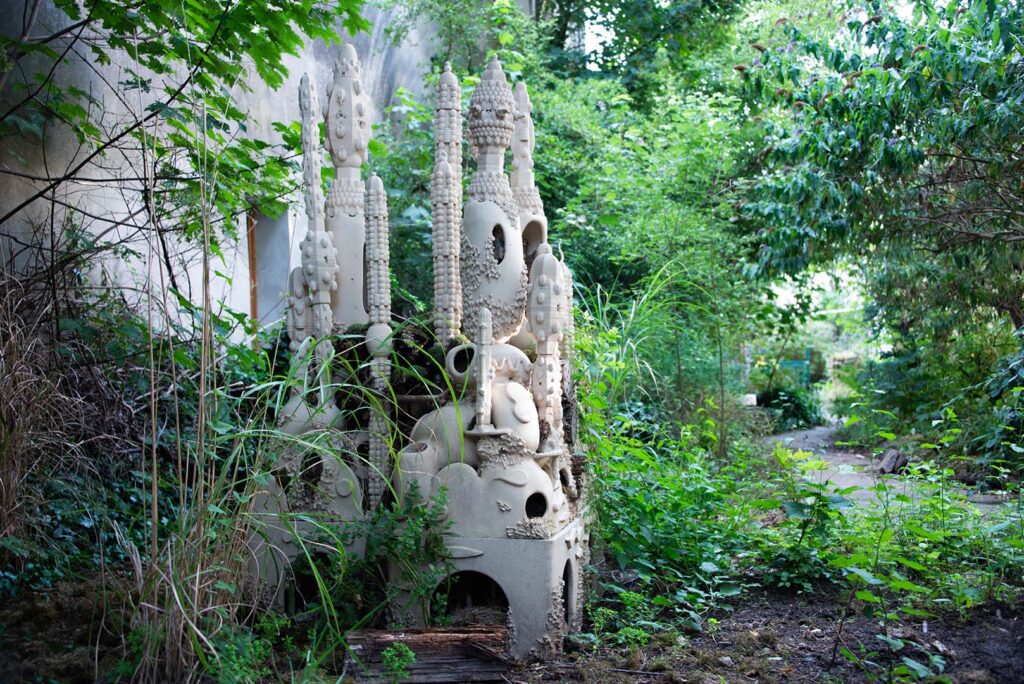
3D-printed clay insect “hotel” (Les Utopies Entomologiques)
Parisian artist Raphael Emine, in collaboration with an Italian company WASP, created a series of impressive sculptures made using the technique 3D printing of ceramics, which serve as a habitat for small insects such as bees, spiders and other insects. A set of names “Entomological Utopias” (Entomological Utopias) consists of sculptures of "hotel" structures with corridors, galleries and tunnels, inspired by natural forms - such as honeycombs, spider webs, fractal plants and minerals surfacesinternational.com+2designboom.com+23dmag.com+2.
Goals and functionality
- Biodiversity in cities – These clay structures are designed to support insect populations and promote their reproduction and residence in urban and park environments.
- Design efficiency – Given the open mesh and porous surfaces, ventilation and adaptation to seasonal changes are enabled.
- Behavioral research – Installation in the park Maison Blanche in Marseille also serves as a scientific observation: how colors and shapes attract specific types of insects designboom.com+23dmag.com+2surfacesinternational.com+2.
Technology and materials
- Created with the help of WASP 3D printer: models WASP 40100 LDM and Delta WASP 2040 Clay with "continuous feeding" system reddit.com+13designboom.com+13surfacesinternational.com+13.
- Material: local clay suitable for long-term exposure to outdoor conditions - resistant to moisture, temperature changes and wind.
Broader context and inspiration
- 3D printing of clay is nothing new – WASP has previously developed TECLA, the first clay 3D printed house (2021) in Italy, an example “zero-mile” construction built with local materials worldarchitecture.org+6en.wikipedia.org+6australiandesignreview.com+6.
- Advantages: recyclable material, reduced waste, less dependence on transport, environmentally friendly production.
- This concept combines art, architecture and ecology into a whole aimed at encouraging biodiversity and strengthening ecosystems within the urban context.
💬 Additional experiences from the community
On Reddit, users described similar DIY projects: roadside clay printers, in-depth technical specifications and useful comments:
"It's a bee hotel for solitary bees... The aeration is giving by the material, as long as you don't glaze or fully fire the clay..." reddit.com+1reddit.com+1
"Clay is pretty sticky naturally... paste like consistency... not runny" reddit.com
Users emphasize the importance of ventilation, avoiding glazing, controlling humidity, and keeping the structure porous. GCC printers use a clay syringe, a “snail” extruder, and a layered approach—details that bring the process closer to home for entomologists and enthusiasts.
Advantages and challenges
| Advantages | Challenges |
|---|---|
| Environmentally friendly | Technically demanding – precise calibration of clay paste |
| Promoting biodiversity | Long-term durability against weather conditions |
| Attractive and educational | The need for population monitoring and maintenance |
Why is it important?
- Develops urban ecology and also changes the approach to materials and production in architecture.
- It continues the trend of sustainable and local construction – a model like this highlights that clay is not just for houses, but also for small, purpose-oriented installations that encourage life.
Conclusion
Les “Utopies entomologiques” are a fascinating example of how technological and ecological innovation can be combined through 3D clay printing. Through carefully designed structures, insects are allowed to find their home in urban environments and awareness of the value of micro-habitats is raised. This project shows that technology like the WASP printer can serve small but important ecological goals – from true eco-arts.
If you are interested in how you can print a similar installation yourself, equipment, clay recipes, or specific maintenance tips – feel free to write!

Responses